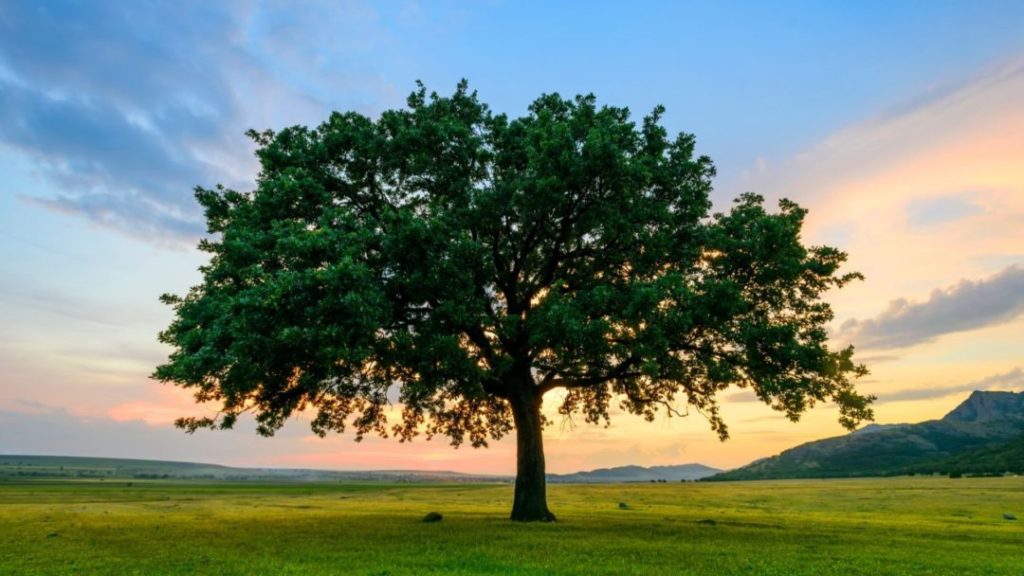Table of Contents
SPOOKY TREES
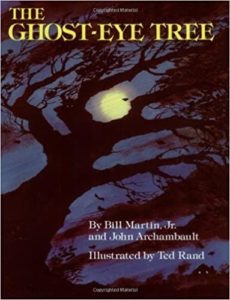 |
By Bill Martin, Jr., and John Archambault, The Ghost-Eye Tree (Square Fish, 1988) is a story-poem about a little boy and his older sister, sent out at night to fetch a bucket of milk, which involves passing the the truly creepy Ghost-Eye tree (“feared by all/the great and small”). The little boy wears his special hat, which makes him feel safer, even though his sister tells him it makes him look stupid. An owl panics them; he loses the hat; and his sister bravely goes back to retrieve it. A wonderfully illustrated account of being scared of the dark by a very spooky tree. For ages 4-8. |
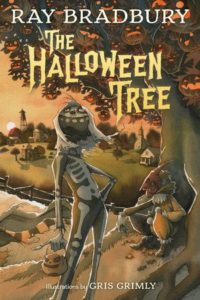 |
Ray Bradbury’s The Halloween Tree (Yearling, 1999) is the eerie tale of eight boys on Halloween night, headed for a haunted house – where they meet the skeletal Mr. Moundshroud and encounter the Halloween tree, hung with grinning jack-o-lanterns. The book traces the history of Halloween customs from the ancient Egyptians to the Mexican Day of the Dead. Eerie and wonderful for ages 9-12. |
| Madagascar’s Legendary Man-eating Tree is a hoax, dating to 1881. But it’s still an interesting story. |
THROUGH HISTORY WITH TREES
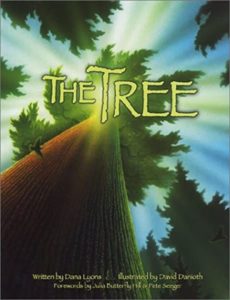 |
By author/musician Dana Lyons, The Tree (Illumination Arts, 2002) is told in the voice of an ancient Douglas fir: “For eight hundred years I have lived here/Through the wind, the fire, and the snow.” An inspiration for young environmentalists, illustrated with wonderful pictures of awesome trees. For ages 5-8. |
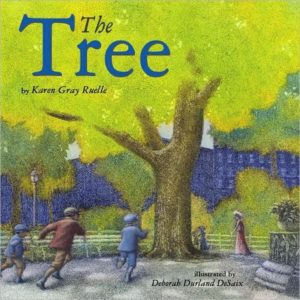 |
Karen Gray Ruelle’s The Tree (Holiday House, 2008) is a journey through time with the oldest elm tree in New York City, which sprouted 250 years ago on land that is now part of Madison Square Park. For ages 7-10. |
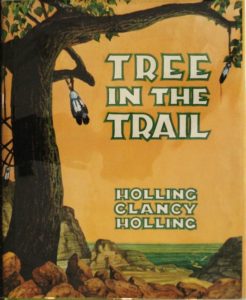 |
Holling C. Holling’s Tree in the Trail (Houghton Mifflin Harcourt, 1990) – originally published in 1942 – is a 200+-year history of the Santa Fe Trail as experienced by a cottonwood tree, from the buffalo and Kansa Indians to the Spanish conquistadors, French trappers, and Conestoga wagon trains. Heavily illustrated with colorful paintings, sketches, maps, and diagrams. For ages 9-12. |
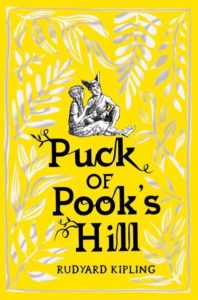 |
In Rudyard Kipling’s classic Puck of Pook’s Hill – available in many editions – Dan and Una are performing a version of A Midsummer Night’s Dream when Puck himself appears. Puck – who swears by the ancient English trees, oak and ash and thorn – magically conjures up people and stories from old English history for the children: Normans and Saxons, Roman soldiers and Picts, Vikings, explorers, and pirates, the signing of the Magna Carta. Included are wonderful poems, among them ”A Tree Song,” “A Smuggler’s Song,” and “The Bee-Boy’s Song.” For ages 9 and up. |
| Read Puck of Pook’s Hill online here at Project Gutenberg. |
TREE POEMS
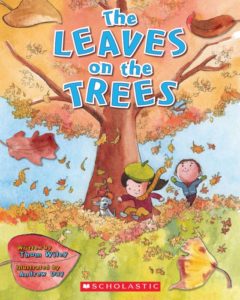 |
Thom Wiley’s The Leaves on the Trees (Cartwheel Books, 2011) can be sung to the tune of “The Wheels on the Bus” – “The leaves on the tree are falling down/falling down/falling down/Autumn is here!” For ages 3-5. |
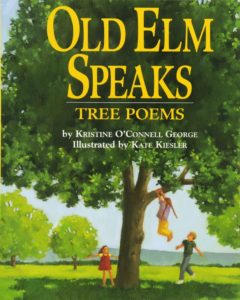 |
By Kristine O’Connell George, Old Elm Speaks (Houghton Mifflin Harcourt, 2007) is an illustrated collection of short poems celebrating trees. “Oak’s Introduction,” for example, speaks directly to the reader: “I’ve been wondering/when you’d notice/me standing here. I’ve been waiting/watching you/grow taller. I have grown too/My branches/are strong. Step closer./Let’s see/how high/you can/climb.” For ages 4-9. |
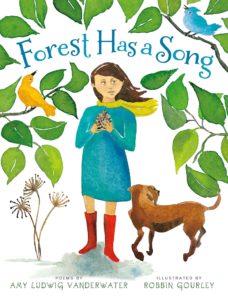 |
Amy Ludwig VanDerwater’s Forest Has a Song (Clarion Books, 2013) is a collection of 26 short poems about the forest and its inhabitants, from chickadees and frogs to moss and trees. Illustrated with lovely stylized watercolor paintings. For ages 5-9. |
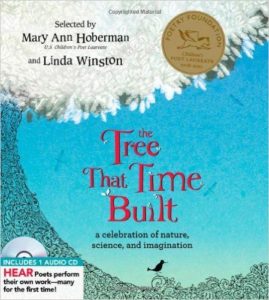 |
Selected by Mary Ann Hoberman and Linda Winston, The Tree That Time Built (Sourcebooks Jabberwocky, 2009) is an illustrated collection of over 100 poems about the natural world by such poets as Walt Whitman, Emily Dickinson, Langston Hughes, Eve Merriam, and Ogden Nash. See the “Think Like a Tree” section for many poems about trees. For ages 7-12. |
| See Joyce Kilmer’s Trees, which begins “I think that I shall never see/A poem lovely as a tree.” | |
| Pair it with Ogden Nash’s Song of the Open Road. You’ll see why. | |
| I’ve always loved Philip Larkin’s The Trees. (“Last year is dead, they seem to say/Begin afresh, afresh, afresh.”) |
MATHEMATICAL TREES
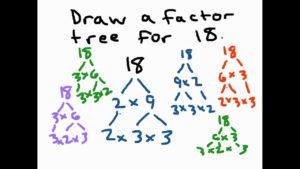 |
At the Math Playground, experiment with Factor Trees. |
| From the American Mathematical Society, learn all about the many different kinds of mathematical trees at Trees: A Mathematical Tool for All Seasons. For older students. | |
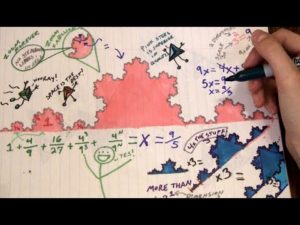 |
With Vi Hart’s Doodling in Math Class, learn about Binary Trees. |
| Counting Trees is an excellent math lesson on estimation based on a tree farm. Included are printable worksheets, data sheets, and questionnaires. |
